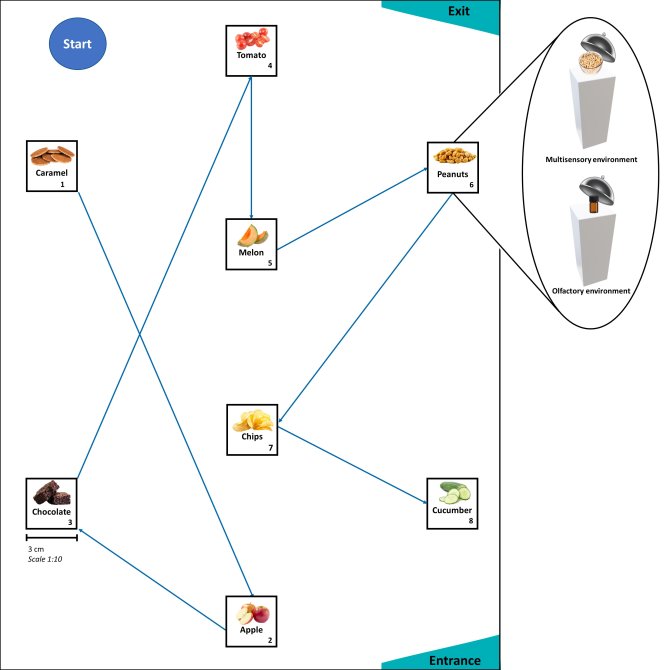
News
Human spatial memory gives priority to high-calorie foods
People remember the location of high-calorie food more accurately than of low-calorie food, research by Wageningen University & Research shows. The findings - published in Nature’s Scientific Reports - suggest that human spatial memory (which enables people to remember where objects are in relation to each other) has evolved to prioritize the location of high-calorie foods.
The researchers think this helped our hunter-gatherer ancestors to survive within harsh food environments. It may also explain why some individuals may respond less successfully to the modern food environment, where high-calorie foods are readily available.
Memory test
During Lowlands Science, PhD candidate Rachelle de Vries - from the lab of Sanne Boesveldt (Human Nutrition & Health, Sensory Science and Eating Behavior) and Emely de Vet (Consumption and Healthy Lifestyles) – measured with colleagues food location memory. They instructed 512 participants to follow a fixed route through a room with eight food products or eight food-scented cotton pads. These were placed in different locations.
When the participants reached a sample they tasted the food or smelled the cotton pad. After this, they rated how much they liked the food sample and how familiar they were with it. Food and fragrance samples included apple, crisps, cucumber and chocolate brownie. The participants were then asked to indicate the location of each food or food odor sample on a map of the room in a surprise memory test.
Accurate for high-calorie foods
Participants were respectively 27 percent more accurate (with real food) and 28 percent more accurate (with food odors) in mapping high-calorie foods in the correct location, in comparison to the low-calorie samples.
This may have helped human ancestors survive in environments with fluctuating food availability
Spatial memory was not affected by whether the food was sweet or savory or how much participants liked or were familiar with each product. Food mapping was 2.5 times (243 percent) more accurate when the participants were given food samples instead of food-scented cotton pads.
From adaptive mechanism to adverse effects
The findings indicate that human spatial memory has an implicit preference for locating high-calorie foods. This bias, according to the authors, may have helped human ancestors survive in environments with fluctuating food availability. Remembering where high-quality resources could be found in the environment, and being able to efficiently locate them once they became available, was of vital importance to the survival and reproduction of our hunter-gatherer ancestors.
But what once was an adaptive mechanism, may now have negative effects for the food choices people make in the modern food environment. Follow-up research shows that people with a stronger ability to resist responding to high-calorie foods may be more protected against adverse effects of the cognitive bias. How exactly the high-calorie spatial memory bias influences individuals’ eating behavior is now being further explored.
